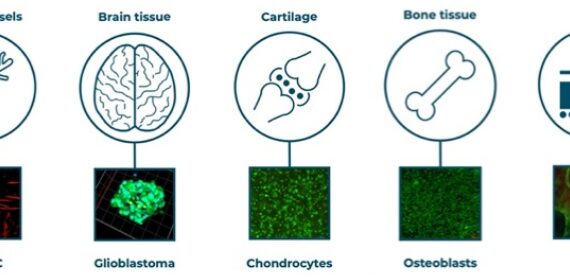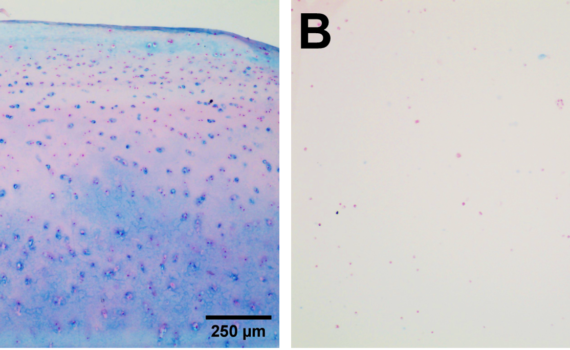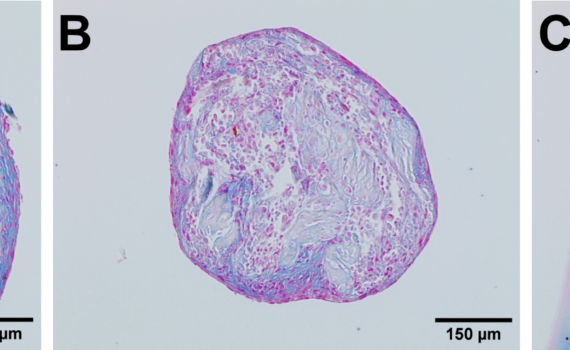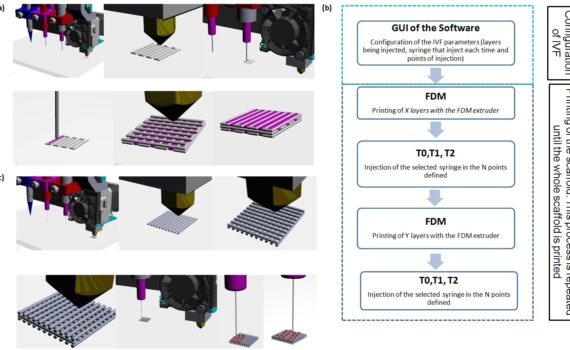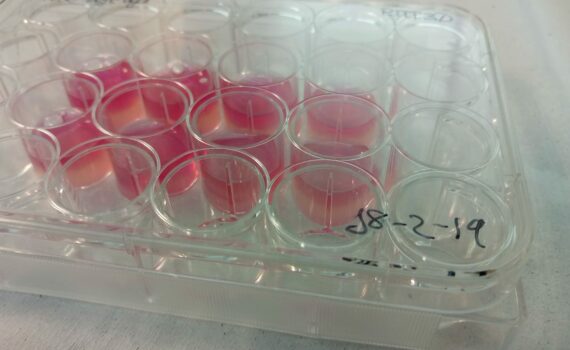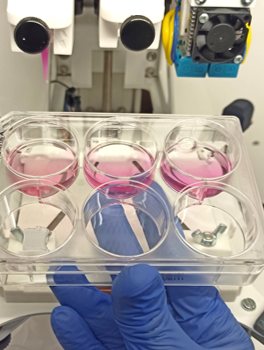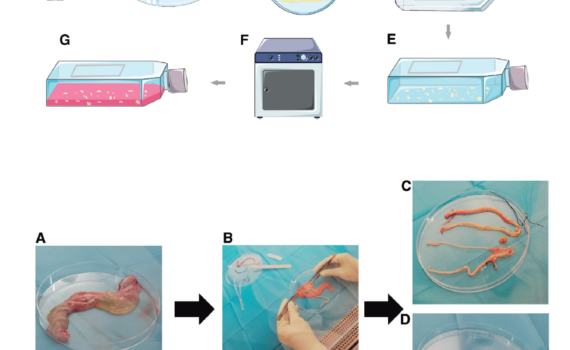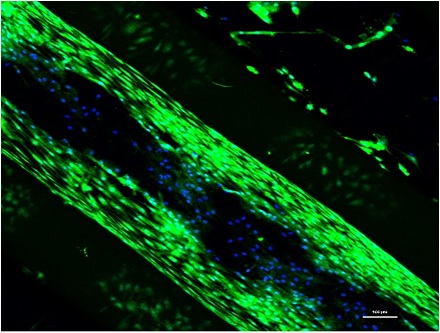00 INTRODUCTION GEL-MA INX© is a gelatin-based bioink that exhibits excellent biomimicry given it derives from natural collagen, the main component of the extracellular matrix. GEL-MA INX© is based on the functionalisation of gelatin by covalent attachment of methacryloyl moieties to its amine groups, yielding gelatin-methacrylamide (GEL-MA). GEL-MA INX© is […]
Cartilage
+10 INTRODUCTION Alginate, also known as alginic acid, is a natural polysaccharide found in brown algae. It has a linear copolymer structure comprised of homopolymeric blocks of (1→4)-linked β-D-mannuronate and α-L-guluronate residues. Given the similarity of its chemical structure to polysaccharides naturally present in the extracellular matrix of human tissues, […]
+30 INTRODUCTION Hydrogels are at the forefront of 3D bioprinting and tissue engineering. However, the wide variety of choices available, and the diverse physicochemical nature of the biomaterials comprising the hydrogels, complicate the selection of the most adequate formulation for each specific application. The purpose of this method is to […]
+5-1 The biofabrication technique comprises two processes for every volume: first, the fused deposition of the thermoplastic polymer to obtain the scaffold and second, the injection of the bioink and CaCl2 solution to fill the printed scaffold. Firstly, commercial non-medical grade PLA (1.75 mm filament) was used and it […]
+100 Introduction: Injuries to the knee meniscus commonly lead to osteoarthritis. Current therapies for meniscus regeneration, including meniscectomies and scaffold implantation, do not achieve complete functional tissue regeneration. This has led to increased interest in cell and gene therapies and tissue engineering approaches to meniscus regeneration. The implantation of a […]
+70 Introduction Choosing appropriate biomaterials for fabricating a bioink is a fundamental step in3D bioprinting. While a wide variety of biomaterials can be used, hydrogels have been pointed as attractive materials for bioink preparation, since they can provide a highly hydrated and permeable 3D polymeric structure with tunable mechanical and […]
+70 This method describes a robust and reproducible method for ready isolation and expansion of ovine Wharton’s jelly-derived MSC (oWJ-MSC) from umbilical cord (UC) for use in non-clinical research to support proof-of-concept studies addressing safety, efficacy, and the study of mechanisms of action (MoA) of novel MSC-based treatments. The protocol […]
+20 Human articular chondrocytes were isolated as previously described (Lopez-Ruiz et al., 2013) Chondrocytes were grown in Dulbecco’s modified eagle’s medium (DMEM) – high glucose (Sigma) supplemented with 10% fetal bovine serum (Gibco), 50 microg/microL of l-ascorbic acid 2-phosphate (Sigma), 1% penicillin-streptomycin (Sigma), and 1% ITS (Gibco) in a 25-cm2 […]

